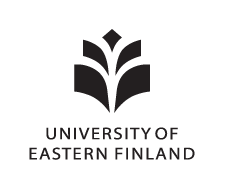Data for: Water level drawdown makes boreal peatland vegetation more responsive to weather conditions
Date
2024-03-11Author(s)
Unique identifier
doi:10.5061/dryad.dz08kps39Metadata
Show full item recordResearch data
Citation
Köster, Egle (University of Eastern Finland). Chapman, Jack P. B. (Finnish Meteorological Institute). Barel, Janna M. (Radboud University Nijmegen). Korrensalo, Aino (University of Eastern Finland). Laine, Anna M. (Geological Survey of Finland). Vasander, Harri T. (University of Helsinki). Tuittila, Eeva-Stiina (University of Eastern Finland). , Data for: Water level drawdown makes boreal peatland vegetation more responsive to weather conditions, 2024, doi:10.5061/dryad.dz08kps39.Licensed under
Abstract
Climate warming and projected increase in summer droughts puts northern peatlands under pressure by subjecting them to a combination of gradual drying and extreme weather events. The combined effect of those on peatland functions is poorly known. Here, we studied the impact of long-term water level drawdown (WLD) and contrasting weather conditions on leaf phenology and biomass production of ground level vegetation in boreal peatlands. Data was collected during two contrasting growing seasons from a WLD experiment including a rich and a poor fen and an ombrotrophic bog. Results showed that WLD had a strong effect on both leaf area development and biomass production, and these responses differed between peatland types. In the poor fen and the bog, WLD increased plant growth, while in the rich fen, WLD reduced the growth of ground level vegetation. Plant groups differed in their response, as WLD reduced the growth of graminoids, while shrubs and tree seedlings benefited from it.
In addition, the vegetation adjusted to the lower WTs, was more responsive to short-term climatic variations. The warmer summer resulted in a greater maximum and earlier peaking of leaf area index, and greater biomass production by vascular plants and Sphagnum mosses at WLD sites. In particular, graminoids benefitted from the warmer conditions.
The change towards greater production in the WLD sites in general and during the warmer weather in particular, was related to the observed transition in plant functional type composition towards arboreal vegetation.
Keywords
Link to the original item
http://datadryad.org/stash/dataset/doi:10.5061/dryad.dz08kps39Collections
Related items
Showing items related by title, author, creator and subject.
-
Plant size, latitude, and phylogeny explain within-population variability in herbivory
Wetzel, William (Montana State University); Hahn, Philip (University of Florida); Inouye, Brian (Florida State University); Underwood, Nora (Florida State University); Whitehead, Susan (Virginia Tech); Abbott, Karen (Case Western Reserve University); Bruna, Emilio (University of Florida); Cacho, N. Ivalu (National Autonomous University of Mexico); Dyer, Lee (University of Nevada Reno); (2023)Interactions between plants and herbivores are central in most ecosystems, but their strength is highly variable. The amount of variability within a system is thought to influence most aspects of plant-herbivore biology, ...Dataset
-
Role of iodine oxoacids in atmospheric aerosol nucleation: data resources
He, Xu-Cheng,University of Helsinki; Tham, Yee Jun,University of Helsinki; Dada, Lubna,University of Helsinki; Wang, Mingyi,Carnegie Mellon University; Finkenzeller, Henning,University of Colorado Boulder; Stolzenburg, Dominik,University of Helsinki; Iyer, Siddharth,University of Helsinki; Simon, Mario,Goethe University Frankfurt; Kürten, Andreas,Goethe University Frankfurt; (2020)Data for manuscript "Role of iodine oxoacids in atmospheric aerosol nucleation"Dataset
-
FLUXNET-CH4: A global, multi-ecosystem dataset and analysis of methane seasonality from freshwater wetlands (Appendix B and Figure 3)
Delwiche, Kyle B.,Department of Earth System Science, Stanford University, Stanford, California; Knox, Sarah Helen,Department of Geography, The University of British Columbia, Vancouver, British Columbia, Canada; Malhotra, Avni,Department of Earth System Science, Stanford University, Stanford, California; Fluet-Chouinard, Etienne,Department of Earth System Science, Stanford University, Stanford, California; McNicol, Gavin,Department of Earth System Science, Stanford University, Stanford, California; Feron, Sarah,Department of Earth System Science, Stanford University, Stanford, California; Department of Physics, University of Santiago de Chile, Santiago, Chile; Ouyang, Zutao,Department of Earth System Science, Stanford University, Stanford, California; Papale, Dario,Dipartimento per la Innovazione nei Sistemi Biologici, Agroalimentari e Forestali, Università degli Studi della Tuscia, Largo dell'Universita, Viterbo, Italy; euroMediterranean Center on Climate Change CMCC, Lecce, Italy e Forestali, Universita;; Trotta, Carlo,euroMediterranean Center on Climate Change CMCC, Lecce, Italy; (2021)This dataset contains metadata for methane flux sites in Version 1.0 of FLUXNET-CH4. The dataset also has seasonality parameters for select freshwater wetlands, which were extracted from the raw datasets published at ...Dataset

